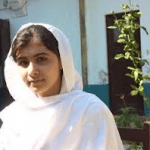 |
|
Naan compliant
|
The February 2010 military strategy in Afghanistan’s largest Taliban stronghold, Marja, deviates from what US soldiers dysphemistically refer to as mowing the grass: repeated eradication of the Taliban from provinces and cities due to counterinsurgent oversight – namely, supplanting Taliban leaders with their own. The New War Model, the brainchild of General Stanley A. McChrystal, not only intends to weaken the insurgent network and deliver a “…government in a box, ready to roll in,” it also sets out to win over the Afghan people. But how new is this new war model, and more significantly, will strategies to woo civilians stand the test of time? A closer look at the last seven years shows that properly implemented social welfare initiatives have the best chance of creating the hope needed to build a stable Afghanistan.
The War on Terror includes formidable enemies and martyrs, and is borne of economic, religious, and cultural divides deeply-rooted in the psyche of all involved. The war in Afghanistan presents the US with one of its most problematical military engagements to date. The forgotten war has become the war of necessity. Since 2001, there have been 1,700 military fatalities, with 2009 as the deadliest year (520). As for civilians (aka collateral damage), the UN reports a total of 2,412 fatalities in 2009 alone, with 773 deaths attributed to improvised explosive devices (IEDs). The brazen insurgent attacks in Kabul (considered the safest city) including the one of a UN guest house on October 28, 2009, elicits multiple views about the ratio of progress to regress. While military attacks have tapered – likely due to tactical directives on civilian safety – insurgent attacks on civilians have risen. But so too have the Taliban’s strategic efforts to provide for basic needs, prompting top officials like Gen. McChrystal to warn that while it is possible to defeat the Taliban militarily, it is also possible to “defeat ourselves” by neglecting civil engagement.
Initial civil engagements were made shortly after the commencement of war. A 2002 report from the Department of Defense shows that engaging civilians was, and continues to be, a sine qua non for military strategy in Afghanistan. A 2006 NY Times piece highlights soldiers‘ efforts to win the “hearts and minds” of civilians even when met with perpetual challenges by insurgents. Just as quickly as Civil Affairs would coordinate the development of schools, roads and clinics, insurgents committed to their destruction. But at some point, the Taliban recognized that that was exactly what they needed to do (along with some bullying) to situate the Afghan people in their corner. The Taliban’s carrots and sticks welfare efforts represent a conspicuous mechanism of control.
Today, they use similar intimidation tactics to derail progress. As of March 2010, Marja, a city that boasts a population of 80,000, transforms into the “kingdom of the Taliban” at night according to an elder tribal resident. Locals are paid to keep quiet, feared into silence or silenced altogether. Insurgents hold meetings in randomly-selected homes to keep everyone on guard; “night letters” are posted on mosque doors warning of punishment for cooperation with US-led forces; and civilians are forced to provide them with food and shelter. According to Mike Mullen, chairman of the Joint Chiefs of Staff, the Marja operation is now focused on holding the gains, and is expected to last from 12-18 months.
While every gain moves the trajectory of development in the right direction, there is still much work to be done on the civilian front. A 2010 International Security Assistance Forces (ISAF) report calls for a “better coordinated and resourced civilian effort” to overcome the developmental challenges facing Afghanistan.
The government-in-the-box inserted by the Bush Administration purported to bring, among other things, eventual peace and prosperity to a country not only mired in decades of international and civil strife, but one that, along with Pakistan, poses the gravest threat to global security. Eight years and two elections later, Afghanistan continues as a cesspool of insecurity propagated by the escalation of attacks by insurgents; corruption stemming from an opium economy that accounts for 90 percent of the world’s supply; and deprivation that ranks it as 181 of 182 countries on the UN’s Human Development Index (HDI) and 135 of 135 on the Human Poverty Index (HPI).
The HDI (inclusive of the HPI) provides a broader definition of well-being as compared to Gross Domestic Product (GDP). For the Afghan people, even after 8 years of liberation from Taliban rule, the statistics are grim. In a country of 25 million, the adult life expectancy is 43.6 years, with a 40 percent probability of not surviving to age 40 (Hong Kong’s is 1.4 percent). The adult literacy rate is 28 percent, and 78 percent of the people do not have access to drinking water. The UN’s most recent report warns of the exacerbation of poverty primarily as a result of “patronage, corruption, impunity and over-emphasis on short-term goals.”
Wooing the Afghan people by supplanting insurgent leaders and building schools and roads should be an extension of a national social welfare system initiated by the Karzai government. Perusal of the country’s official website includes a list of National Development Strategies (such as Social Development) with no working links – thus no substantive information about these strategies exists, if such programs exist at all. However, there is a National Solidarity Programme (NSP) created by Afghanistan’s Ministry of Rural Rehabilitation and Development that advocates “good local governance…to empower rural communities.” According to their weekly reports, they have disbursed about $278 million in block grants since 2003 to support 21,000 projects covering 361 districts across 34 provinces. NSP’s model provides village-level, community-run initiatives intended to empower citizens. Implementation of a bottom-up strategy in the early stages of Afghanistan’s reconstruction is apropos given its geographic and ethnic factionalism. But it will likely have to be replaced with a national strategy that reduces overlapping services, deters disproportional growth, and standardizes health, educational and safety measures.
It may not be time to implement the Afghan equivalent of F.D. Roosevelt’s Social Security Act of 1935 or the Obama Administration’s American Recovery and Reinvestment Act of 2009, but the Karzai government – with pressure from donating countries – must make the welfare of the Afghan people a priority, not an afterthought. Some say that security will lead to greater social development, while others insist that social development leads to security. But national social development efforts led by the government do not necessarily have to rest on security. While security and corruption in Afghanistan present major obstacles, they must not deter consideration of long-term investments in civilians. These are imperative to the development of Afghanistan. Preventive social programs will send a message to the Afghan people of commitment to a stable social structure, and will eventually increase security and minimize corruption as ordinary Afghans assert themselves.
President Obama’s surprise 12-hour visit to Afghanistan on March 28, 2010 delivered a swift kick to the Karzai government, one that will hopefully bode well for the Afghan people. Whether the Karzai government construed President Obama’s visit as an ass-kicking is another matter, but they would do well to heed it as such and put forth a concerted effort to increase security, eradicate corruption, ameliorate living conditions, invest in education, institute preventive health measures, and create work investment projects. If the development of Afghanistan goes awry it could very well signify the end of hope for a people who have endured too much for much too long.
Farzana Nabi is a recent Ph.D. graduate in Social Welfare from the University of California at Berkeley. Her research focuses on socio-political issues within Islam and acculturation issues within the Afghan diaspora.











